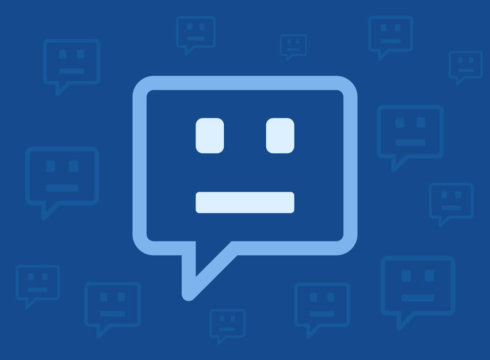SUMMARY
There Are Many Chatbots Which Are Getting Launched In The Market At A Very Fast Pace, But Few Understand Their Real Value
Inc42 Daily Brief
Stay Ahead With Daily News & Analysis on India’s Tech & Startup Economy
The chatbot is a $500 Mn market growing at the rate of 30% annually. In 2016, chatbots started making news for their benefits and by 2017 they proved how they can change the game for any business. Today, 80% of businesses want to deploy chatbots by 2020. It may very well happen that by 2020, we will talk more with chatbots than our real spouses!
The customer service industry is worth $79 Bn in the US. Chatbots could replace 29% of these representatives resulting in nearly $23 Bn savings annually which is a huge saving!
Similarly, chatbots could result in $15 Bn savings in the salaries of sales representatives as well as securities, commodities and financial service representatives. Chatbots could also save more than half the annual expenditure in salaries for insurance sales representatives.
There are many chatbots which are getting launched in the market at a very fast pace, but few understand their real value.
So before developing a chatbot, the first question we should ask ourselves is, what purpose will it serve? There are 5 categories we can choose from:
1. The Utility Chatbot
It solves specific tasks for us. In this category comes the virtual assistants who are used to set reminders, choose tickets or pay your bills. One great example of this is Haptik’s digital assistant.
2. The Customer Service Chatbot
This category aims to provide customer service. An example can be KLM’s chatbot. Starting from booking confirmation and customer queries, it now responds to emojis with location trackers. Now with its entry in Whatsapp business platform, it can serve customers digitally, in over ten languages.
3. The Content Chatbot
Its main goal is to provide information. The chatbot Poncho gives weather information in a fun, quirky way which increases the readability quotient.
4. The Conversational commerce chatbot
It is designed to complete a sales transaction through conversation. Example: 1-800 flowers. It has been observed that many customers find it easy to order flowers through a chatbot than an actual call.
5. The Advertising chatbot
It is not a separate chatbot by itself. It is part of an advertisement as you are watching it, not needing a separate download. Haptik's tie up with HDFC Life is an apt example. It simplifies insurance advice through a 60-second chatbot based quiz. This way, the company can give personalized offerings.
But despite having multiple chatbots in all the five categories, not all are doing well. Let’s find out the reasons.
Flaws With The Existing Chatbots
Natural Language Processing
You may talk about a subject in different ways but the context or meaning may be the same. For example, If you ask a chatbot “What is the day today”, you may get an answer, but if you ask the same question in a different way i.e. “Could you check the day”, you may not receive the same reply. Chatbots have a problem with natural language processing, which is a wide field of research for many companies like Facebook, Google, and others. And it becomes even tougher when the domain spreads beyond the English language.
Machine Learning
Understanding the natural language and providing the right response is what we expect from a bot, which is not the case always.
Providing value
The challenge for companies is to find the right way to incorporate AI through chatbots and provide value-added services to their customers. Some of the chatbots we find today are solving irrelevant use cases or giving poor user experience.
Staying simple
The rule of the game here is to stay as simple as possible in order to succeed as end users don’t like complicated chatbots. Bots trying to handle too many things, fail miserably.
Lacking transparency
Some bots lack transparency. Whenever we are engaging with a bot, we should be made aware at the start of the conversation, that we are chatting with a machine. Some bots don’t do that and give a fake human-like feeling.
Proper human escalation protocol
If you have experience of conversing with Siri or Alexa, you may come across situations where they don’t understand you; they simply take your text and turn it into a web search. This can get frustrating for users, who at the end of the day still rely on human beings to help solve their problems. Bots keep us hanging sometimes. There should be a proper escalation process, in which if a bot is not able to give a clear solution; there is a better way to handle it.
The performance of the different type of chatbots is shown below:
From above data, it is evident, that the Customer Support chatbots are doing well. Commerce chatbots are yet to be successful. Advertising and Content can be areas which can be tapped.
Thus apart from the need to concentrate on good design and character, in order to build a great chatbot, the biggest challenge lies in the prevention of conversation break mid-way. And that’s where good chatbots like Haptik can play around. The human to bot hand-off is used smartly by Haptik and the one launched by Operator for guided commerce between China and US.
Note: We at Inc42 take our ethics very seriously. More information about it can be found here.


